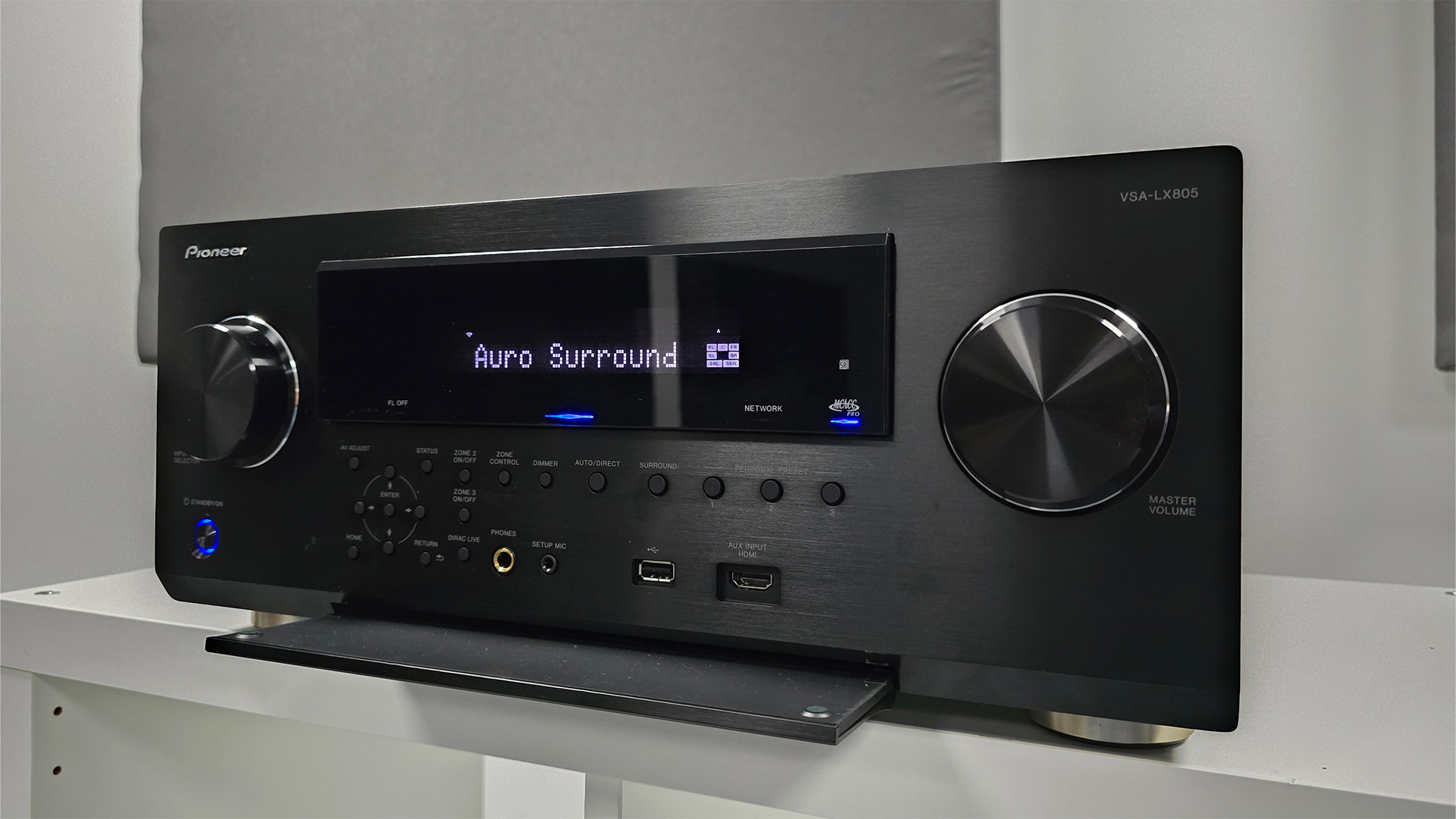
It’s been quite some time since we’ve reviewed a Pioneer home cinema amplifier, seven years in fact, and a lot has changed since then. That Pioneer we tested back in 2017 cost just £250 – something we can only dream of nowadays, as a quality AVR launching under a grand is a rare sight indeed.
That being said, we’re happy to see a new Pioneer land in our AV testing room, especially because since our last review, Pioneer has been in a spot of bother. Onkyo, the parent company of Pioneer and a Japanese audio powerhouse in its own right, filed for bankruptcy in 2022 but was quickly saved by Premium Audio Company (PAC) and Sharp – phew.
So, with a reinvigorated spirit and cash flow, has Pioneer come back stronger than ever? The VSA-LX805 certainly looks the part, as it spearheads the brand’s latest endeavour in the home cinema market, but can it keep up with the competition when it comes to the all-important sound performance?
Price
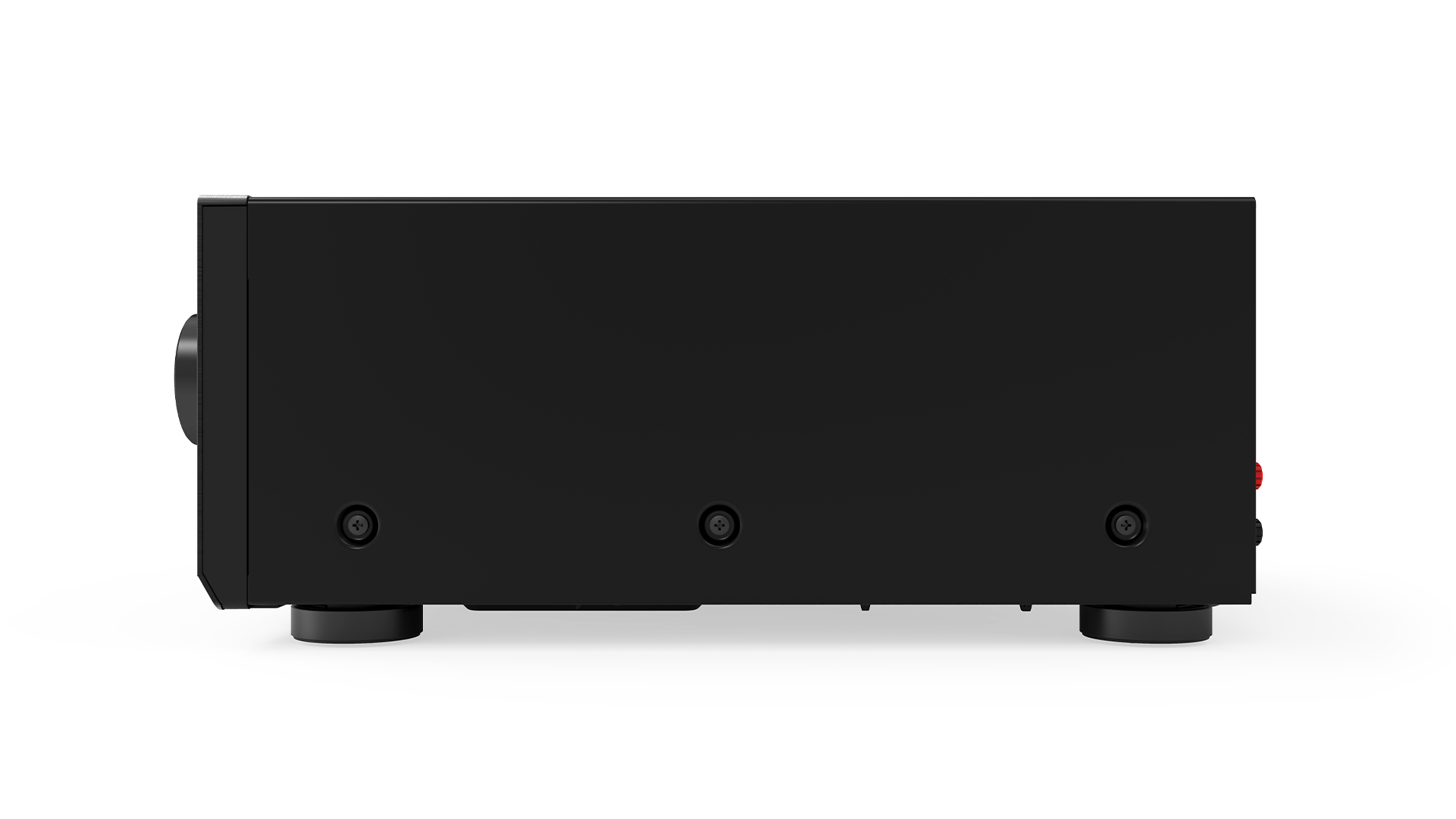
The Pioneer VSA-LX805 retails for £3099 here in the UK, which roughly translates to $3900 / AU$6000 in the US and Australia respectively. The US does have a model that resembles this AVR in both appearance and name, called the VSX-LX805 which retails for $2999. However, we can’t confirm if these two AV amplifiers are the same under the hood and therefore can’t vouch for the US model's performance.
We are using the Arcam AVR5 as our main comparison. Its cheaper, at £1999 / $2000 / AU$3495, but to match the 11 channels of amplification featured on the Pioneer you would need to purchase the additional Arcam PA410 power amplifier for £1249 / $1650 / AU$3495, taking the total to a Pioneer-like £3248 / $3650 / AU$6990.
Build
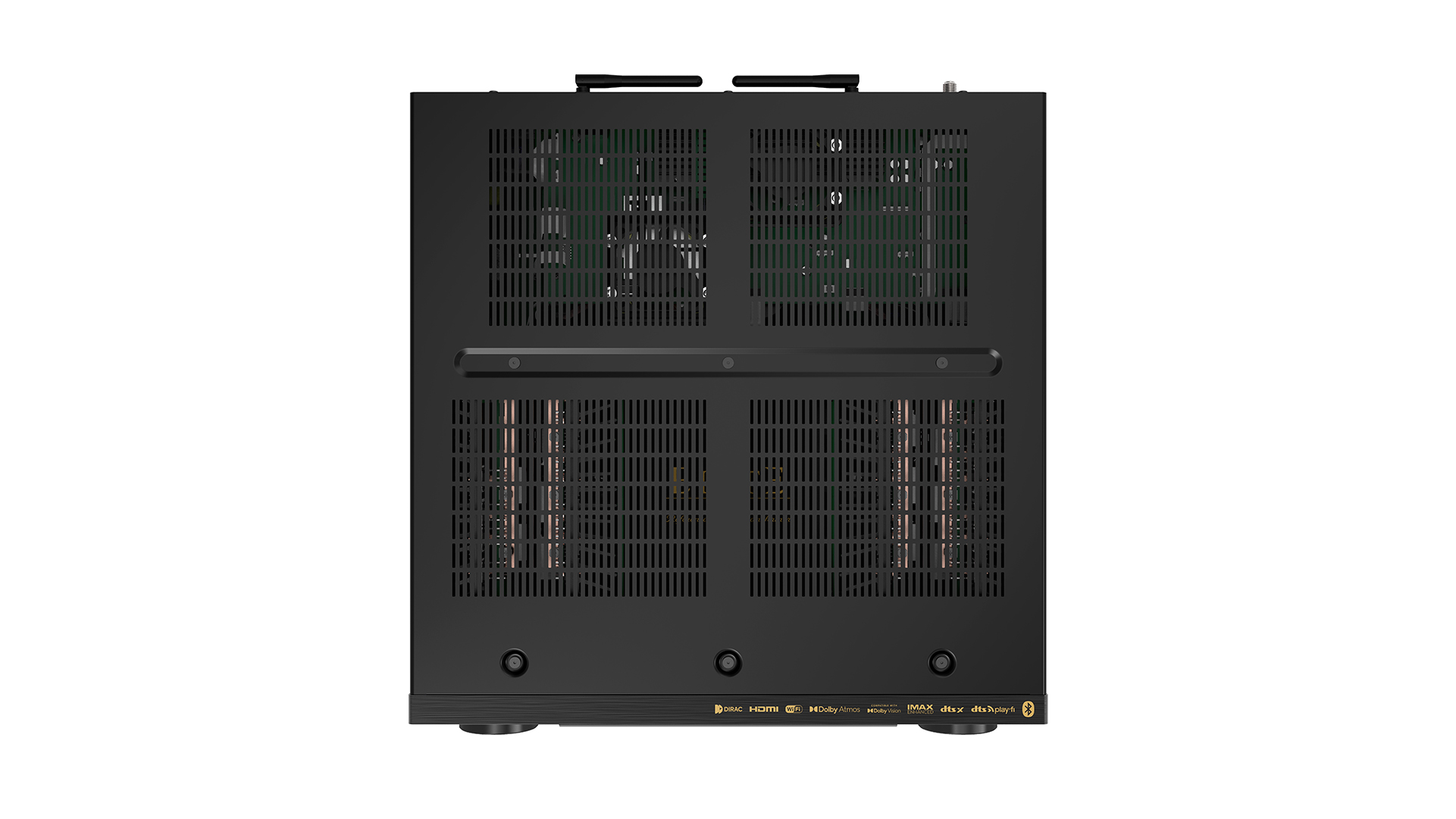
This Pioneer AVR isn’t the most attractive unit we've ever seen. While we know we shouldn’t judge a book by its cover, we also do appreciate an AV amplifier with some visual appeal as it will likely be visible in a media unit arrangement. It’s worth noting that it's a fairly hefty unit, weighing in at 18kg.
It’s a fairly unremarkable black box with sharp edges and a brushed metal finish that we find looks a touch dated. Looking around our test room, we find various Sony, JBL and Arcam models that offer more in the way of aesthetic appeal and build quality. That being said, it does perfectly match the Pioneer 4K Blu-ray player we currently have on our reference rack, and who doesn’t like some design synergy?
One aspect of the Pioneer’s build that we are rather fond of is the folding cover that covers the controls and front-facing ports. It keeps the front of the device looking clean and tidy, although we would have preferred it to be metal like the rest of the unit, rather than plastic.
Features
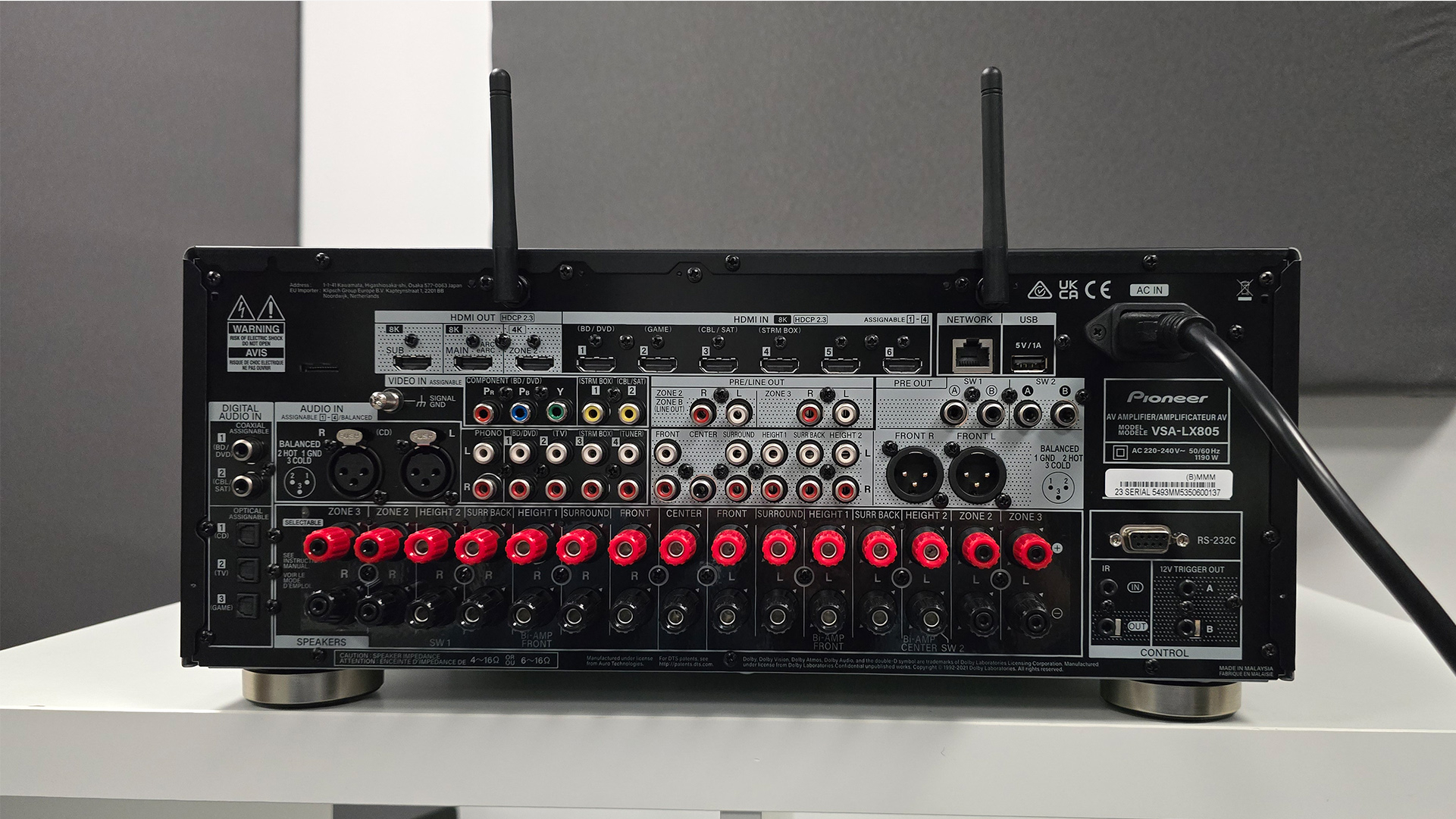
We’d have to seriously nitpick to find faults in the Pioneer’s feature set. The VSA-LX805 offers 150W of Class A/B amplification across its 11.2 channels, with a maximum configuration of 7.2.4; that’s an impressive claim to fame especially when it's all in one convenient (if slightly heavy) package. If you don’t plan on using all of that power in one space, then you can split it into three zones in order to power speakers in other rooms.
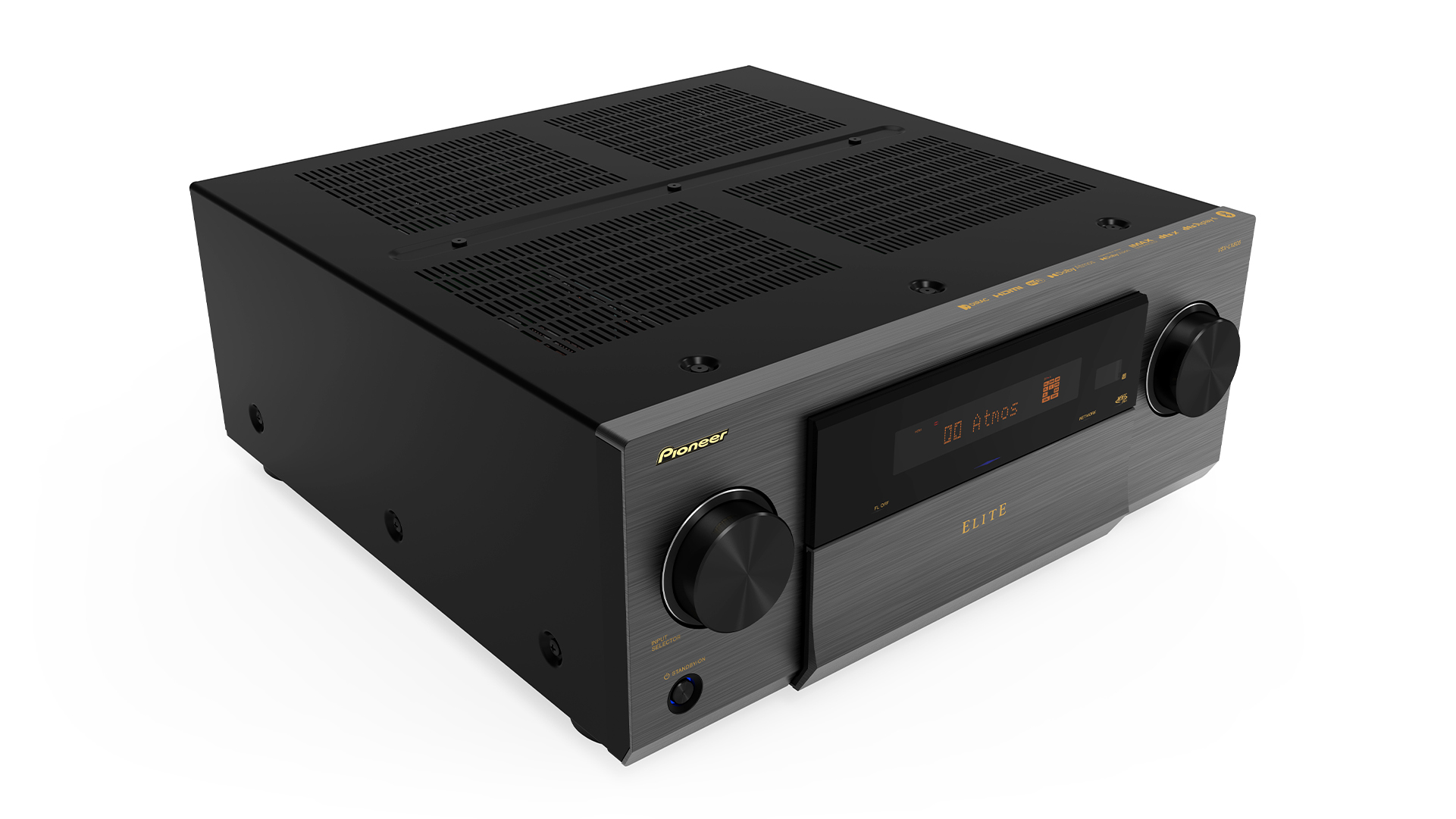
HDMI inputs x 7
HDMI outputs x 3
ARC/eARC eARC
HDMI 2.1 features 4K/120Hz, 8K/60Hz, VRR, ALLM on all rear HDMI inputs
Amplification 11 channels
HDR formats HDR10, HDR10+, HLG, Dolby Vision
Audio formats Dolby Atmos, Dolby TrueHD, DTS:X, Neural:X, Auro-3D
Streaming AirPlay 2, Spotify, Chromecast Built In, Tidal, Roon Ready, DTS Play-Fi, Amazon Music HD, TuneIn, Bluetooth
Voice assistant? No
Connectivity is also a key strength for this AVR with a smorgasbord of inputs and outputs to suit your needs. You’ll find seven total HDMI inputs, six of which are HDMI 2.1 on the rear fascia (capable of 4K/120Hz or 8K/60Hz) and another on the front panel labelled AUX HDMI, which Pioneer seems to think is best for connecting a video camera. You’ll also find three optical ports, two coax, four stereo RCA and an additional phono connection for hooking up a turntable.
In terms of outputs, you’ll find three HDMI outs. These are clearly labelled, with one designated as the main ARC/eARC output, another as Sub and the final one as Zone 2; the first and second of these connectors support 8K, while the third tops out at 4K.
Wireless connectivity is also top-notch, with support for Bluetooth and wi-fi streaming across a plethora of services including Tidal Connect, Spotify Connect, Apple AirPlay 2, Google Chromecast, DTS Play-Fi, Deezer, Amazon Music HD, TuneIn radio; and it’s even Roon Ready.
In terms of audio format support, the Pioneer claims another clean sweep, with support for Dolby Atmos, Dolby Surround, DTS:X, Neural:X and IMAX Enhanced audio. Auro 3D is also on board, however, you may have to complete a firmware update (via wi-fi, ethernet or USB) to access it. HDR format support is a similar situation, with support for HDR10, HDR10+, HLG and Dolby Vision.
The VSA-LX805 comes with a basic but very functional remote. It features a button to activate an orange backlight which we find to be useful in our dark testing environment when using a projector.
Rounding things out with the surprisingly intuitive on-screen set-up process. The mic-assisted MCACC room calibration (Pioneer’s proprietary automated set-up tool) is simple and thorough, and while it can take a while, we find it optimises the sound to the shape and layout of our AV testing room well. Patience is key here, as at times it looks like the system freezes and produces no sound, but this is all part of the process, and it results in very few additional adjustments being required (in our experience at least). The Pioneer also includes the option to calibrate with Dirac Live, which will compensate for room shape and acoustics for a more balanced and lifelike sound, although that is a much more involved process and requires additional software and equipment.
Sound
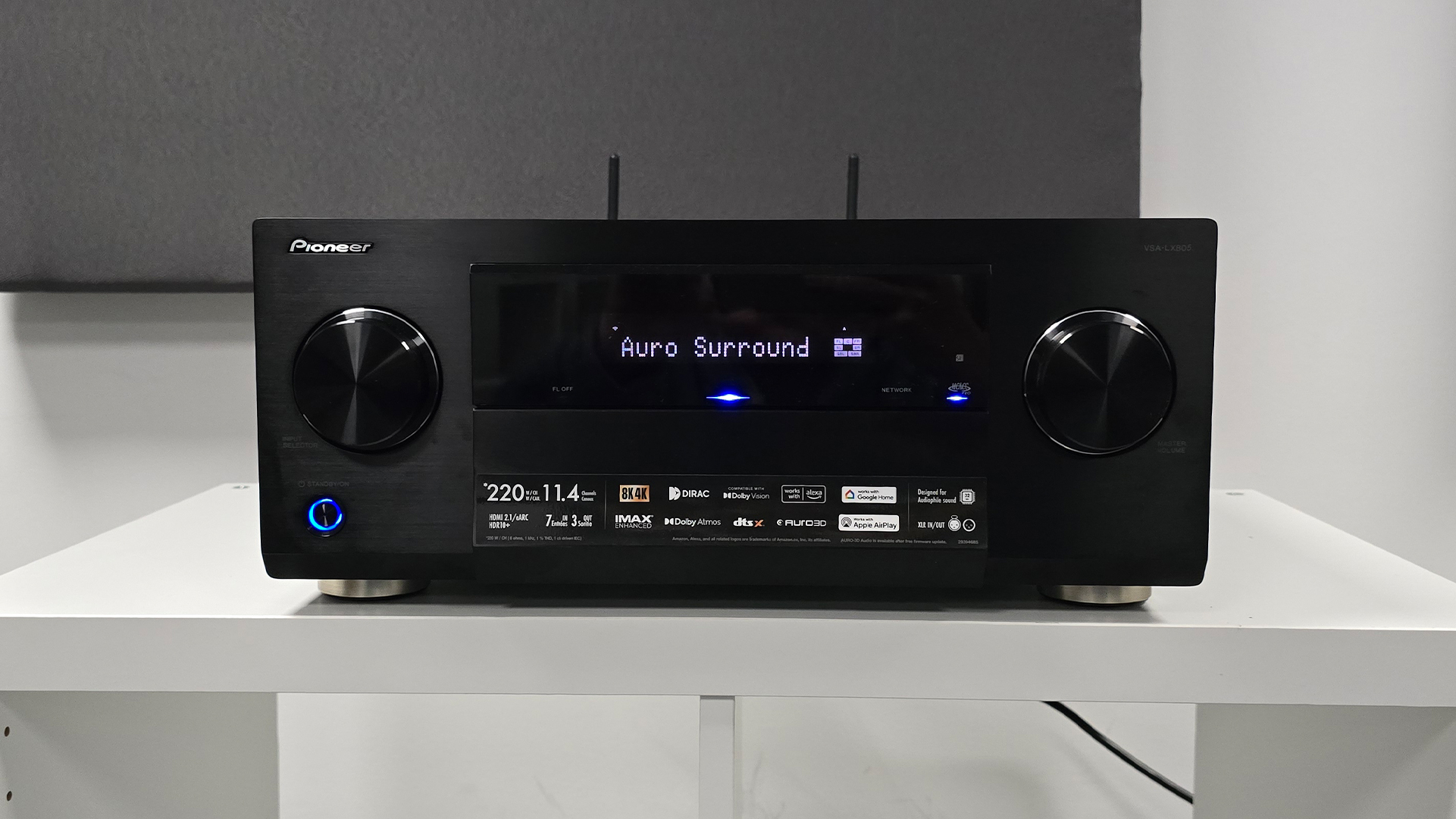
It’s immediately obvious that Pioneer has opted for scale over subtlety with this AVR. While that’s not necessarily the wrong choice, it does highlight some sonic pitfalls in the VSA-LX805’s performance. We’re comparing it to the Arcam AVR5 with our PMC Twenty5.23 reference speaker package in a mostly 7.1 configuration.
Starting with Interstellar, we begin with the water planet sequence in DTS:X. As the space shuttle descends onto the treacherous planet, we’re struck by the sheer scale of the sound. The rushing wind and swooping effects of the shuttle, as Cooper initiates evasive manoeuvres to reach the planet’s surface in the quickest time possible, are impressive, with the sound travelling organically around our seating position thanks to the fluid and considered approach to the movement of sound.
This extends to the dramatic crescendo of the scene as the skyscraper-sized tidal wave strikes the crew’s spacecraft. As the score's organ punches through the soundtrack, there is an impressive sense of dynamics that helps to add a proper gut punch to this scene. The sound of rushing water as the spaceship is picked up and tossed around is once again cinematic in scale and mostly engaging too, making for a solid first impression for the Pioneer.
However, it's the slower and quieter aspects of this scene that highlight the issues we have with the Pioneer’s lack of subtlety. As Cooper urges his crew to hurry out of the ship (and subsequently hurry back to the ship) we’re left feeling puzzled by the lack of texture or expression in his voice. What should be a panicked and exasperated delivery is instead left feeling flat and unconvincing.
While punchier displays of dynamics are rewarded on the Pioneer, low-level dynamics are not quite as refined: the ticking metronome that is used to build tension in this scene is too easy to ignore, for example. A switch to the Arcam delivers a polar opposite experience as the snappy metronome is reintroduced to sublime effect. This is the first hint that the Arcam is the more considered and refined amp of the pair. Not only that, but we find the Arcam quickly betters the Pioneer in the larger scale dynamics department too, with a punchier and more textured presentation of Zimmer’s sensational score.
Shifting over to the grungy streets of Gotham City, The Batman highlights more of the Pioneer's strengths and limitations, this time in Dolby Atmos. While there isn’t much depth or texture to dialogue, they are at least very audible and we have no problem hearing dialogue over scenes with loud gunshots or the Batmobile’s engine. As the car chase transitions onto the motorway, we’re reminded of the Pioneer’s ability to deliver the necessary scale of action set-pieces, as the sound of lurching trucks and screeching car tyres envelops us.
However, there is an unavoidable sense that sound effects have a harsh, slightly bright sound to them, as evidenced by the gunshots fired off by The Penguin and his goons. There’s a hard leading edge to each effect with little in the way of dynamics in reserve to follow through with, leaving us wincing at some particularly harsh-sounding effects.
Furthermore, the Arcam injects more energy into this scene, making for an enhanced sense of excitement and tension. It’s certainly more agile and precise than the Pioneer, which seems slightly vague and sluggish in comparison. This scene also highlights how the Pioneer can become clustered towards the centre of our surround package; which is odd considering how adept it is at providing a fairly spacious surround feel. Sound effects seem to compete for dominance over the centre, left and right channels, which creates a congested sound. It's worth noting that this is only really noticeable when there are lots of sound effects happening at once.
We use Dune to affirm our thoughts and feelings towards the Pioneer, this time with our upward-firing Dolby Atmos speakers from KEF connected. The scene in which the Atreides clan are introduced to Dr Liet Kynes offers a decent sense of atmosphere, with the reverberation and echo caused by the large aircraft hangar being present. Moving out onto the golden sands of Arrakis, the performance is practically what we expected. There’s more in the way of height effects, and overall the already expansive soundfield is widened. The Ornithopter zips around with a convincingly fluid sound, contrasted by the punchy bass of the drums in the background, which remain fairly controlled and dynamic. The key strength here is that the Pioneer can add these additional Dolby Atmos channels with no additional power amp required, making for a convenient all-in-one solution.
Rounding things off with a test of musical prowess for the Pioneer, it should be no surprise that the qualms we had with the vocal presentation of this amplifier are a hurdle here too. We listen to Bon Iver’s For Emma in Direct Stereo and are generally unenthused by the damp vocals. That slight congestion rears its head here too. That being said, it doesn’t get anything overly wrong, playing the song with good enough timing and acceptable detail.
Verdict
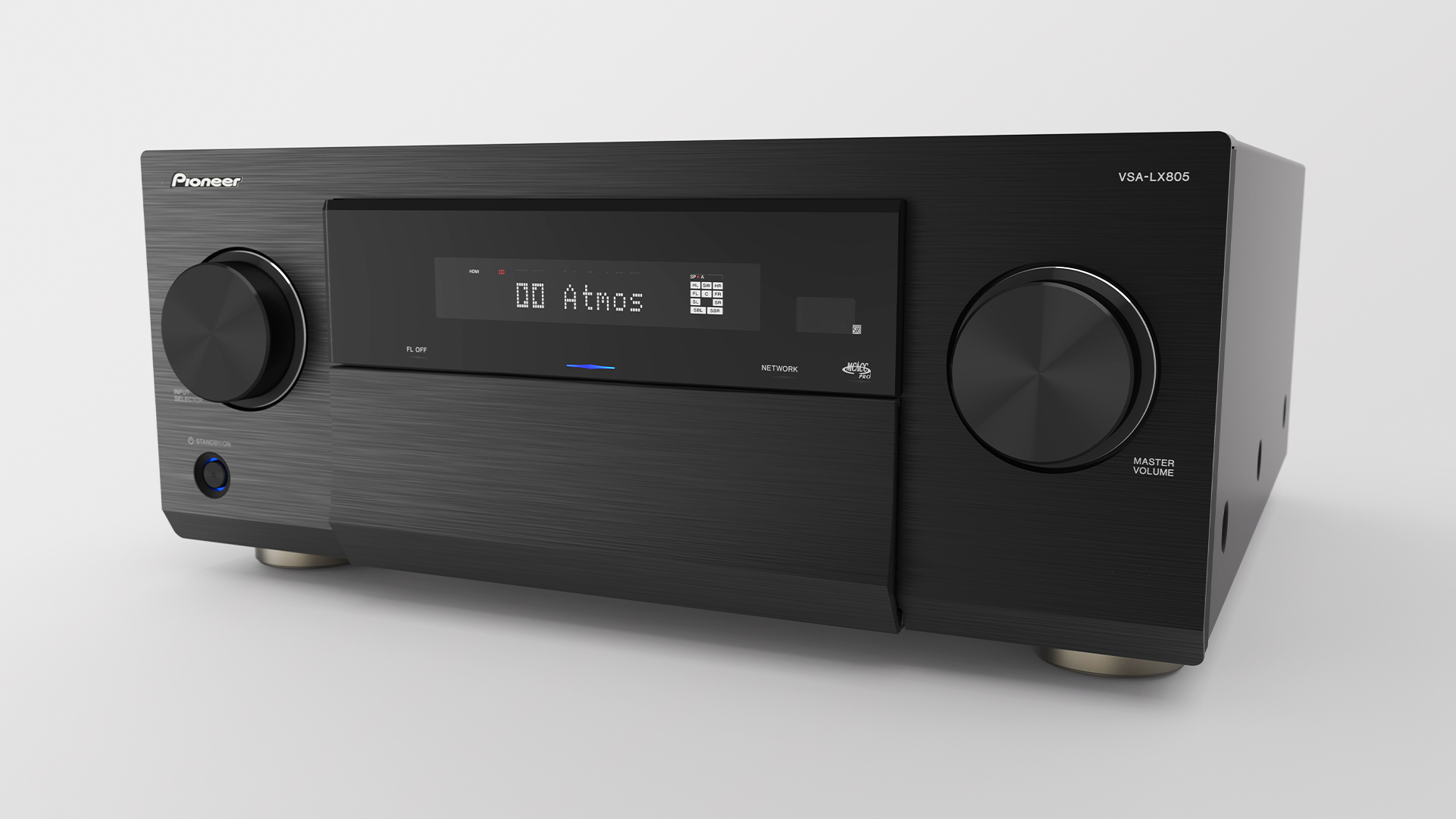
If you want a home cinema receiver capable of subtlety and nuance, then there are better choices than this Pioneer. Its talents are elsewhere and are focused on exciting those hankering after a big, cinematic sound. If that sounds like you, give this Pioneer a listen.
SCORES
- Sound 4
- Build 4
- Features 5
MORE:
Read our review of the Arcam AVR5
Also consider the Denon AVC-X6700H
Read our Denon AVR-X3800H review
Best AV receivers: the top home cinema amplifiers we've tested







